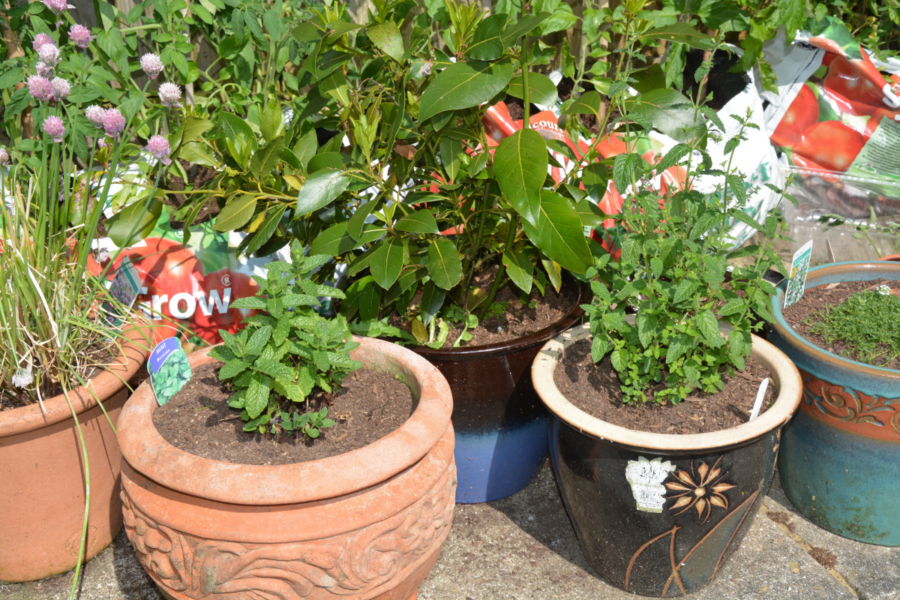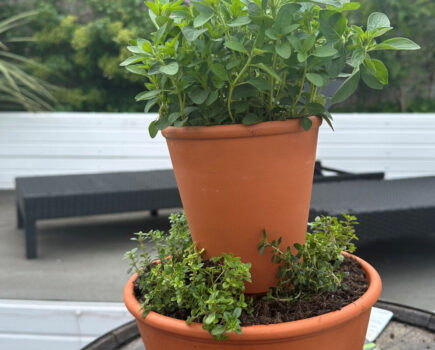Take cuttings now to increase plant stocks, says Ruth
One of my favourite areas of the garden is our collection of herb pots on the patio.
It’s situated close to the back door for kitchen convenience and is made up of a couple of small bay trees, a cluster of different varieties of mint and thyme, some chives, a Russian sage and a fabulous sage called ‘Honey Melon’ which has spires of bright scarlet flowers and leaves that smell of watermelon.
I love the different varieties of mint that are available these days, but it is important to grow them separately because they will quickly lose their individual characteristics of taste and smell if grown in the same container.
They are also better grown in pots as they will quickly take over when grown in the border and even start popping up in the lawn, as I have discovered to my cost.
Hardy herbs are some of the easiest plants to propagate by cuttings and I like to have a few on standby to replace old plants that have grown woody or died. We also use them a lot in cooking so it’s handy to have several favourites dotted about the garden.
This week I’ve been taking cuttings from our massive common sage in the back garden rockery. I’ll eventually add the new plants to the front garden as sage is a favourite with the bees, who currently need all the help they can get.
A sadder job this week was removing a vast lovage plant that had grown to around 3m (12ft) tall and started taking over its border, swamping everything around it and collapsing on itself.
We planted it years ago and it looked amazing for a few years, towering over everything around it. But we never used it in cooking and once it outgrew its spot it had to go, which is a shame, but at least we have recovered a large area of soil in the veg patch for growing other edibles.
Herb cuttings
Making more sage plants
1. Remove a healthy, 10cm (4in) length of growth using sharp, clean secateurs or scissors.
2. Strip away the lower leaves and dip the cut stem in hormone rooting powder or gel.
3. Insert the cuttings around the edge of a pot of dampened seed compost mixed with vermiculite.
4. Seal the pot in a clear plastic bag, or old bottle, and place it somewhere warm out of direct sunlight. Keep compost damp, remove the cover when the cuttings start to grow.
Digging out an old lovage
1. Once I cut down the lovage I had to divide up the massive and deeply-rooted crown with a sharp spade and dig it out section by section. Hard work!
2. Lovage has thick hollow stems which I have saved and tied into bundles. Once they have been hung and dried I’ll use them as insect hotels in winter.
Find more tips, advice and articles like this at the Amateur Gardening website. Subscribe to Amateur Gardening magazine now





